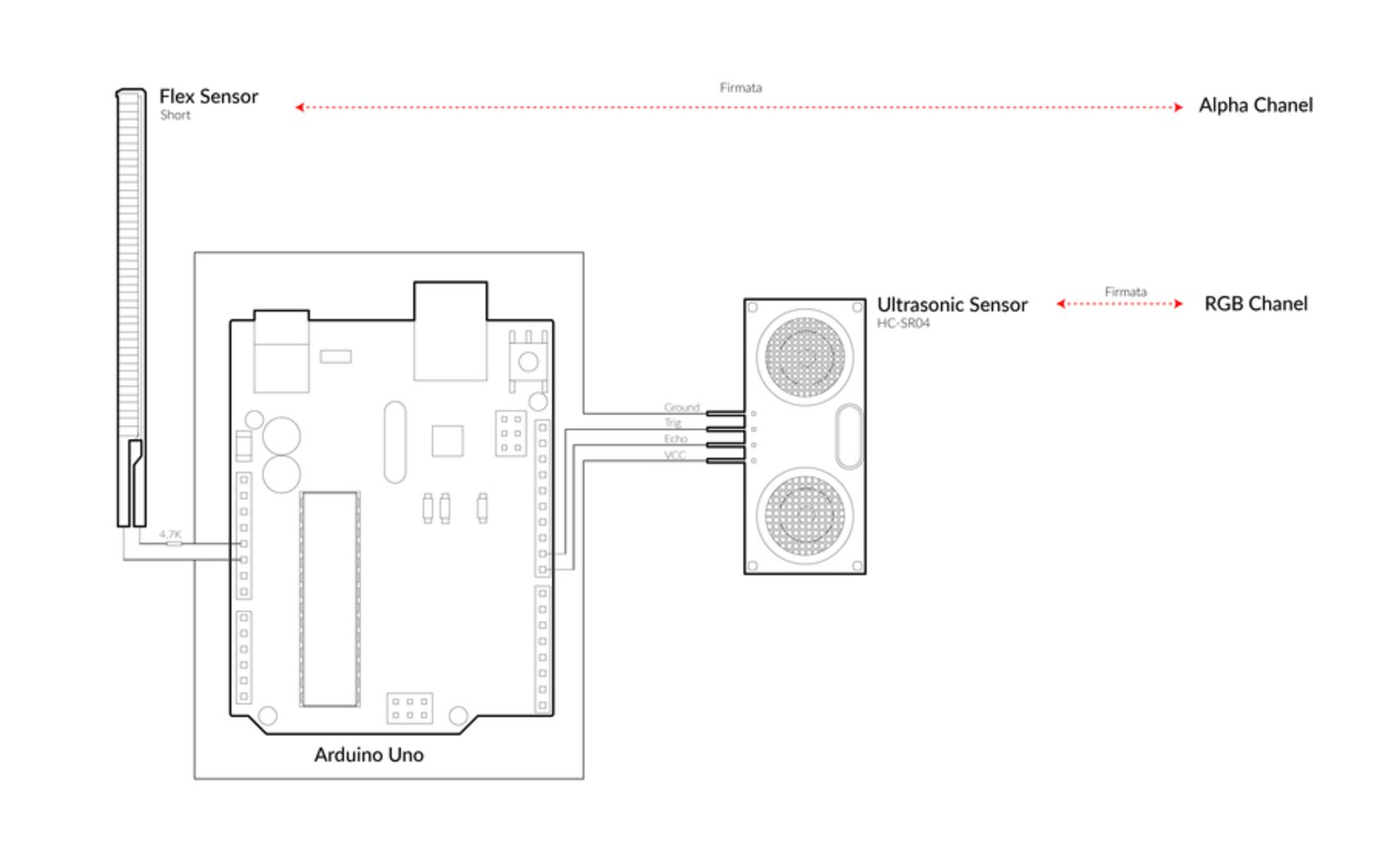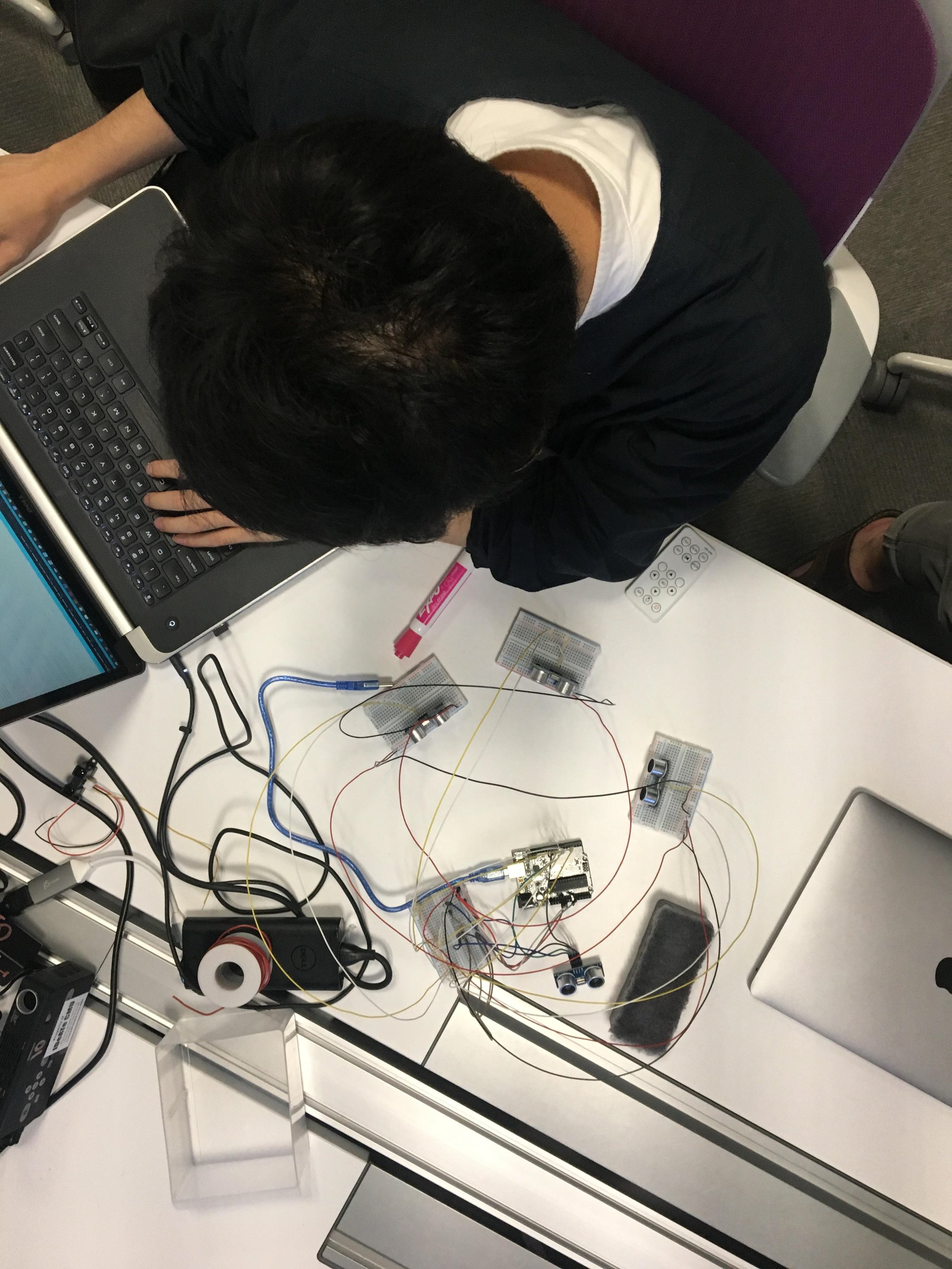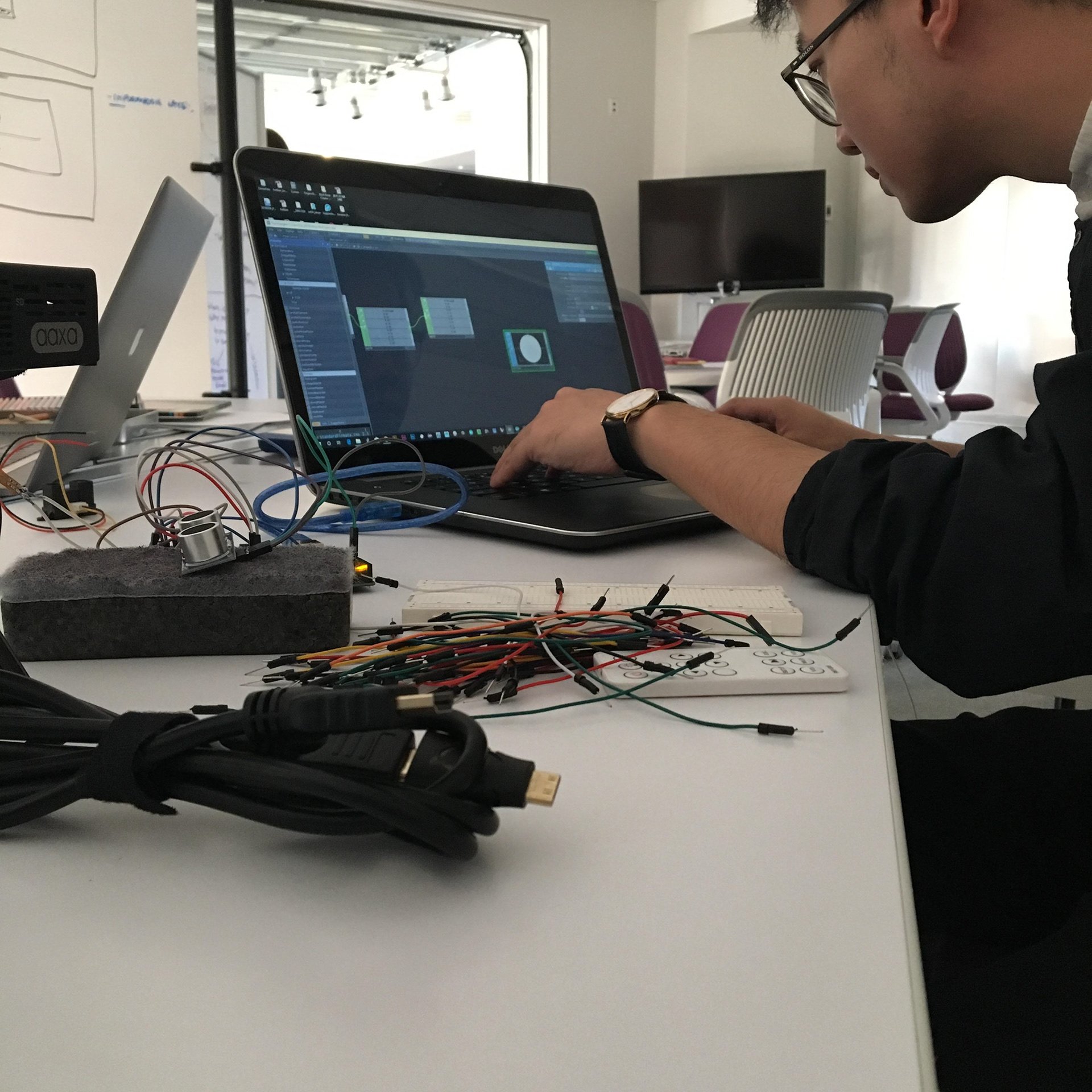Data garden
Made by Ghalya Alsanea, Matt Prindible, Jingyang Liu, Nicole Matis and Jason Zhu
Inspired by the serenity of bamboo forests, the project connects the natural elements of wind, light, and water in an interactive outdoor design.
INTRODUCTION
Our primary inspiration for this installation was the Sagano Bamboo Forest near Kyoto, Japan. The light shining through the densely packed bamboo grove, combined with the natural noises of rustling leaves and creaking stalks, creates a tranquil, otherworldly environment. Our aim is to recreate this meditative atmosphere in the garden, utilizing reflection to mimic the filtered sunlight and the sway of the bamboo to control the sounds of the water feature. Visitors interact with the installation by walking through the garden, causing the projection color to change with their location.
ABOUT
A projector mounted on the patio overhang is directed towards the water feature on the opposite side of the garden. Projection mapping is used to match the light to the shape of the garden. Because the light is projected at an angle, some light is reflected onto the bamboo backdrop, illuminating the section of the garden.
The design makes use of the relatively clear space in the center of the garden. The triad of planters essentially functions as a color selector, using inputs from proximity sensors on each planter to set red, green, and blue color values, corresponding to a color on the RGB color scale. This allows visitors to control the color of the projection while simultaneously exploring the space. If there is no input from the proximity sensors, the projection color will return to a default setting.
Flex sensors attached to the bamboo offshoots sense the bending of the stems in the wind and use this information to set the volumetric flow rate of water into the pool. The flow rate affects the sound of the water feature, as well as the amount of disruption in the water, which changes the way the projection is reflected, thus creating dynamic light patterns on the bamboo.
sensor locations
PROCESS
We began by creating a proof-of-concept sensor prototype using three proximity sensors and a flex sensor. After some trial and error, we successfully exhibited that the color of the projection can be changed based on an object's proximity to the sensor. We were also able to get variable readings from the flex sensor, though we did not test it in the environment. Finally, we recreated the water feature and projected across it, showcasing possible light patterns and color shifts that would be reflected onto the bamboo grove.














